On the tail of the world's biggest parrot – and South America's other avian A-listers

For birdwatching, you can't do better than South America – and these trips offer some of its best wildlife encounters
The dawn mist is rising from the Cuiaba river as we clamber into our boat. I have jaguars on my mind. Tracking down South America’s A-list feline is, after all, the main goal for most wildlife visitors to Brazil’s Pantanal wetlands. But as we pull away from the jetty, the forest awakening, it’s the rising chorus of birds that grabs my attention.
Amid the clamour I pick out individual voices: the rising whistle of a tinamou; the explosive cackle of chachalacas. And soon something else: a raucous, sporadic squawking – getting louder as it approaches.
Two big birds are winging towards us across the river. From their silhouettes, they’re clearly parrots, but it’s not until they pass overhead and up into the branches of a large manduvi tree, long tails flaring, that the sunlight reveals their colour. It’s a stunning cobalt blue.
Binoculars allow me a closer look, revealing the canary-yellow details around the cartoon black eye and massive nutcracker bill. The whole bird looks unreal, like a parrot in a child’s colouring book – a child who was given the wrong crayons.
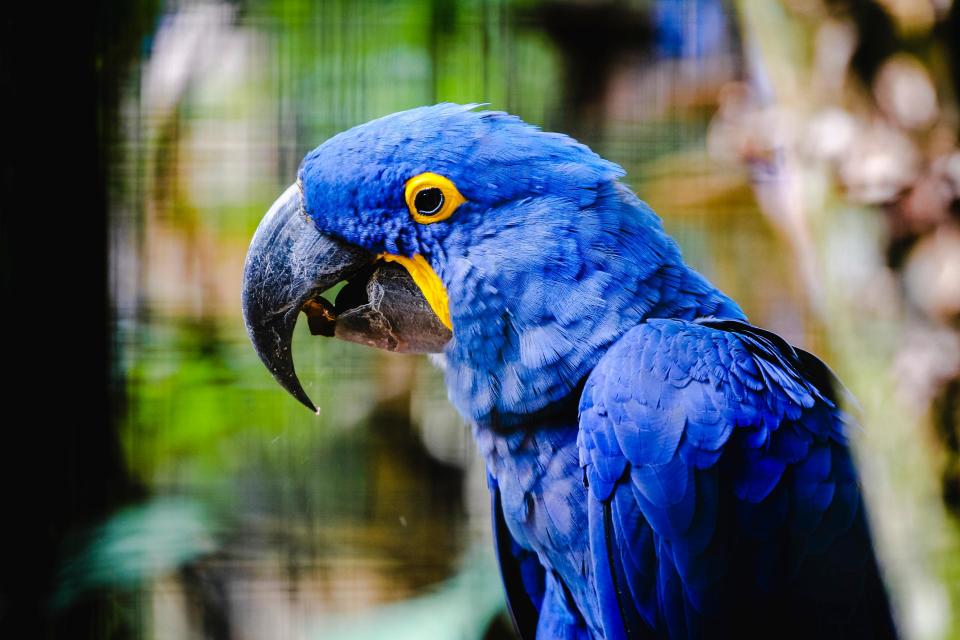
These birds are hyacinth macaws, the world’s biggest parrot and arguably its most beautiful. Measuring more than 3ft in length, and the same across the wings, this spectacular species is highly endangered – a victim of habitat destruction and the illegal cage-bird trade – and now largely confined to the Pantanal. Its bill can crack palm nuts that would defy a sledge hammer. This is an avian A-lister and we’re thrilled to have caught a glimpse.
Lunchtime sees us back at the lodge talking through our sightings. In the absence of jaguars, giant otters have been awarded star mammal status. Meanwhile, we’ve chalked up a pageant of birds: glittering jacamars, subtle sunbitterns, bizarre-billed skimmers, enormous jabiru storks and, of course, those magical macaws.
As I’m leafing through the field guide, I hear that signature screech again. Another pair of hyacinth macaws perform their showy fly-past over the lodge and settle in a pink-blossomed piuva tree. Here, their conversation continues, male and female growling and muttering as they begin the fastidious preening ritual.
Hyacinth macaws may be rare, but here in the Pantanal you can’t miss them. Every fazenda seems to boast its own nesting pair. And it’s not just the macaws: birds are everywhere. In the flooded ditches, an army of egrets, ibises and spoonbills forage between caimans and capybaras; at the lodge, cardinals, cowbirds and kiskadees flock to the feeders while hummingbirds zip between blooms; in the forest, there are elusive potoos, trogons and owls. You needn’t be a birder to conclude that this is the richest bird spectacle on Earth.
But mind-blowingly, the Pantanal may not even be the richest bird spectacle in South America. Here, with a guide, a first-timer might see 200 species in a week. In Ecuador, however, serious birders have more than doubled this in a single day.
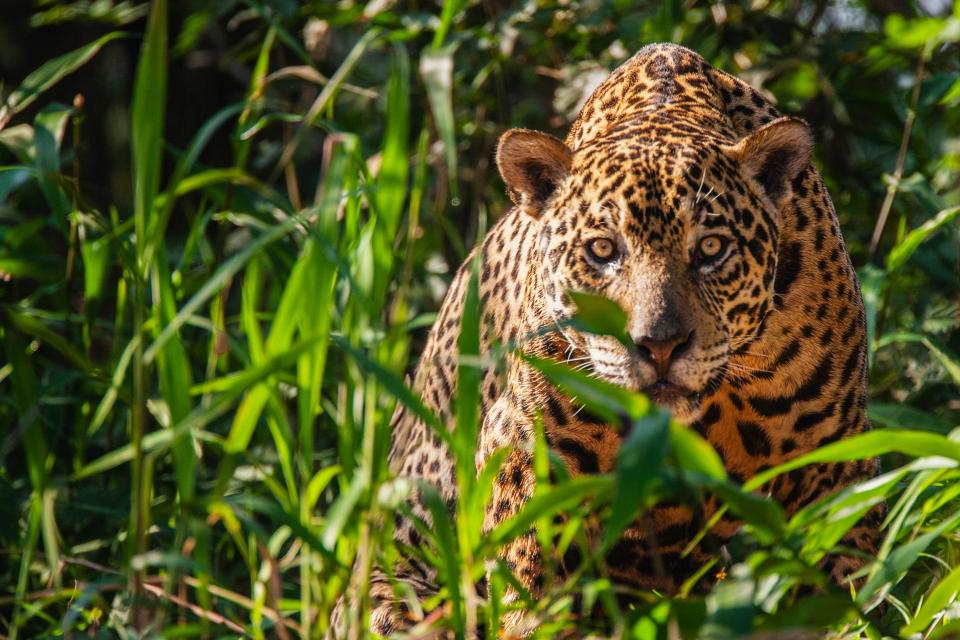
And while Brazil may be home to some 1,867 species, Colombia has a staggering 1,963, the highest of any country in the world. In total, South America homes one third of all bird species worldwide. No other continent can top its avian splendours, either for quantity or quality.
An ecologist can explain the science behind these stats: how such riches all come down to habitat, with the double-whammy combo of Amazon and Andes boasting the world’s highest biodiversity. And then there are the very different landscapes of paramo, cerrado and pampas, each a stage for its own unique avian cast.
But, neither stats nor science can explain the thrill of these spectacles for the visitor – whether a kaleidoscope of parrots flocking to a rainforest salt lick, a condor soaring over an Andean canyon or an explosion of penguins from the Patagonian surf.
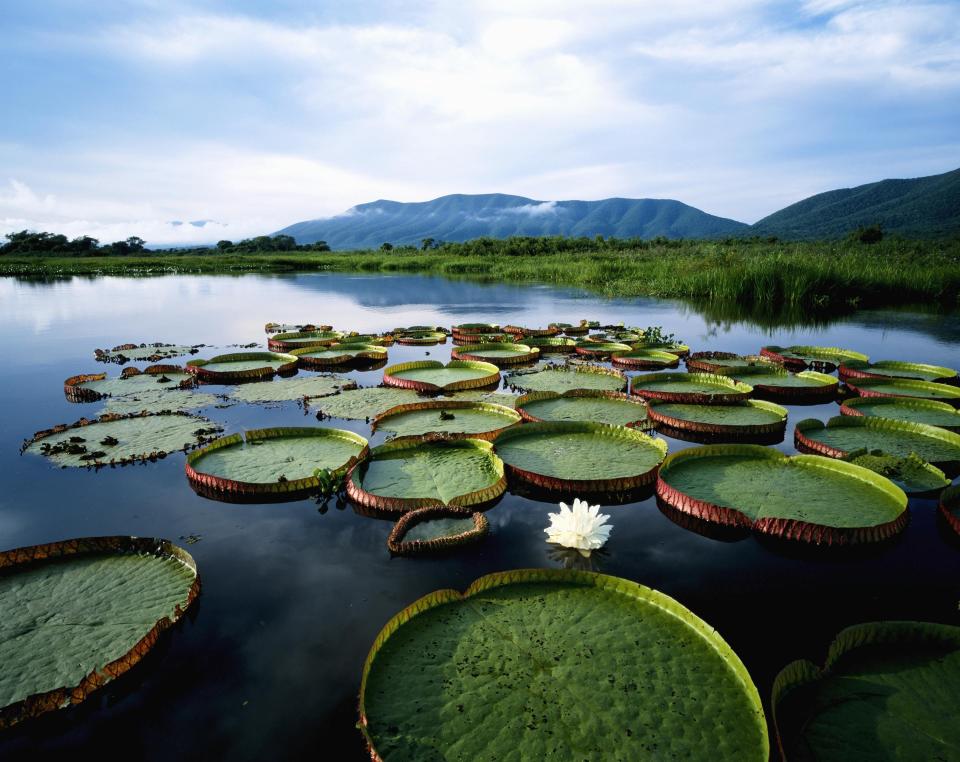
One good thing to come out of lockdown is a renewed love affair with birds. We’ve been enjoying the antics of garden blue tits or thrilling to the songs of skylarks on our walks and new birdwatching converts are broadening their horizons. The ultimate dream, when the world opens up again, is to visit the continent of birds.
South America offers multiple ways to enjoy its birdlife, with specialist guides, birding trails and viewing towers, but you needn’t go searching. Wherever you head in South America – from the Inca Trail (look out for daredevil torrent ducks on the rapids) to Iguazu Falls (watch comedy-billed toco toucans foraging through your hotel garden) – the birds will be there, in your face. Don’t forget your binoculars.
How to do it
Wildlife Trails (0800 999 4334; wildlifetrails.co.uk) offers a seven-day guided birdwatching tour, plus two full days of boat safaris on the Cuiaba river, from £2,500pp. Includes internal flights, excludes international flights; departs July-October 2021.
10 more of the best wildlife holidays in South America
Peru: Dances at dawn
At first you can only hear them: a froglike belching in the undergrowth. Then, as your eyes adjust, you see them: feathered fireballs, bobbing like lanterns in the predawn darkness. Manu National Park’s cloud forest is a prime spot to observe the courtship “lek” of the Andean cock-of-the-rock. First light reveals the performers in their fluorescent scarlet glory, hopping madly from branch to branch. An hour later, it’s over, leaving you free to explore the country’s premier national park where more than 1,000 species of bird await.
The Crees Foundation (crees-manu.org; crees-foundation.org) offers a seven-night birdwatching trip to Manu National Park including visits to a cock-of-the-rock lek. 2021 departures from $2,260 (£1,693). Minimum four people.
Guyana: Where eagles dare
The harpy eagle is an awesome predator and the world’s most powerful raptor lords it over the rainforest canopy, plucking sloths and howler monkeys from the branches in talons bigger than a tiger’s. Shy and persecuted, it is uncommon, but experienced guides know where to look – and few places offer a better chance than Guyana, where giant otters and giant anteaters are among a world of other oversized wildlife.
The Travelling Naturalist (01305 267994; thetravellingnaturalist.com) offers an 11-night birdwatching and wildlife tour of Guyana from £6,195pp sharing. Includes return international flights. Departs Nov 14 2021.

Falkland Islands: Penguins plus
A rockhopper penguin waddles out of the surf at your feet, fluffs up its headgear then promptly ducks, as you do, to avoid an incoming black-browed albatross. The Falkland Islands host some of the world’s most accessible seabird experiences, with teeming albatross colonies and three species of penguin waddling over the beaches. Land birds include endemics such as the striated caracara and confiding Cobb’s wren, all equally tame – and on this remote archipelago, you’ll have them all to yourself.
Journey Latin America (020 8747 8315; journeylatinamerica.co.uk) offers a 14-day wildlife holiday to Chile and the Falkland Islands from £7,210 per person, including international flights.
Colombia: Feast of feathers
Colombia has more species of bird than anywhere else on the planet. For the first-timer, the explosion of colour, feathers and calls defy comprehension. Even for the seasoned birder, it’s bewildering. with rare endemics such as the aptly named multicoloured tanager and elusive prizes such as the ocellated tapaculo. Each tier of elevation, from river valley to montane cloud forest, has its own suite of species. A two-week guided trip can easily notch up 400 sightings.
Naturetrek (01962 733051; naturetrek.co.uk) offers the 11-day Multicoloured Tanager Tour, exploring Colombia’s central and western Andes and Cauca Valley. From £3,495, including international flights. Departs Nov 22 2021.
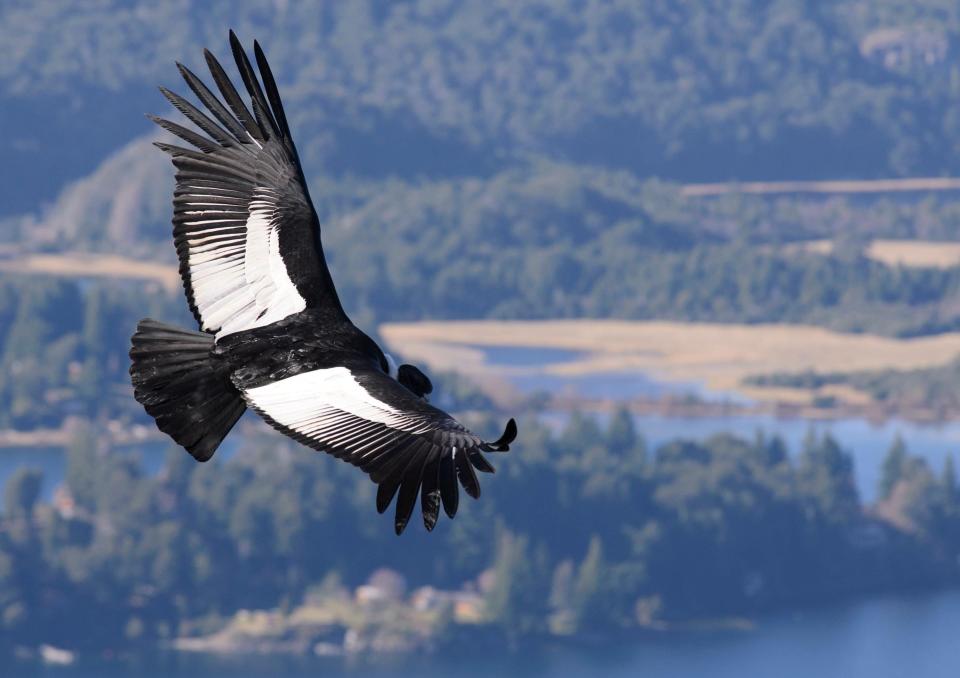
Chile: Flight of the condor
No bird says South America more than the Andean condor: just the sight of those huge wings evokes panpipes. And there is no more photogenic backdrop than Chile’s Torres del Paine National Park. While you track pumas, guanacos and other Patagonian wildlife, a glance skyward often reveals this enormous raptor cruising above the towering peaks and glaciers. Lesser rheas and austral pygmy owls can be spotted too.
Natural World Safaris (naturalworldsafaris.com) offers a six-day guided photography trip to the Ecocamp Patagonia in search of pumas, condors and other wildlife. From £4,000pp, without international flights.
Argentina: Wetland wonders
The Ibera wetlands is Argentina’s Pantanal. The screech of a giant wood rail punctuates the weird booming of the greater rhea – South America’s ostrich – as you approach the water’s edge. There, among grazing capybaras and basking caimans, a panorama of water birds unfolds: snowy egrets, whistling herons and plumbeous ibis probe the margins, while snail kites wheel overhead and strange-tailed tyrants trail their plumes over the grasses. Explore on foot, by boat or even on horseback.
Steppes Travel (01285 880980; steppestravel.com) has an eight-day trip to Argentina, combining the Ibera wetlands with Iguazu and a stay in vibrant Buenos Aires. From £3,995pp, including international flights.

Ecuador: Haven for hummers
Hummingbirds are diminutive power packages, zipping between blooms with a heart-rate that tops 1,000bpm and consuming their own weight in nectar daily. Ecuador boasts some 135 species, more than a third of the world’s total. The variety is dazzling – literally – from tiny beauties such as the spangled coquette and rainbow starfrontlet, to the astonishing sword-billed hummingbird, whose bill is more than half its length. From the Andes to the Amazon, each corner of the country has its selection. Even if you’re feeling lazy, you can spot these coloured delights at the feeders of your lodge.
Wildlife Worldwide (01962 302086; wildlifeworldwide.com) offers a 10-night trip to Ecuador in search of hummingbirds and other wildlife. From £4,275pp, with international flights.
Bolivia: Pretty in pink
Think of South America’s birdlife and you’ll likely think of the lush, green rainforest. But Bolivia’s Salar de Uyuni, the world’s largest salt flat, offers a dramatically different panorama. High in the Altiplano desert, thousands of flamingos flock to the caustic saline waters, tinging the white horizons vivid pink. Alongside Andean and Chilean flamingos you may spy the rare James’s flamingo, once thought extinct. November brings bizarre conga-line breeding displays.
Rainbow Tours (020 7666 1260; rainbowtours.co.uk) offers an 11-day tour of Bolivia, including the Salar de Uyuni, plus Sucre, La Paz and Lake Titicaca. From £4,135pp, based on two sharing, with international flights.
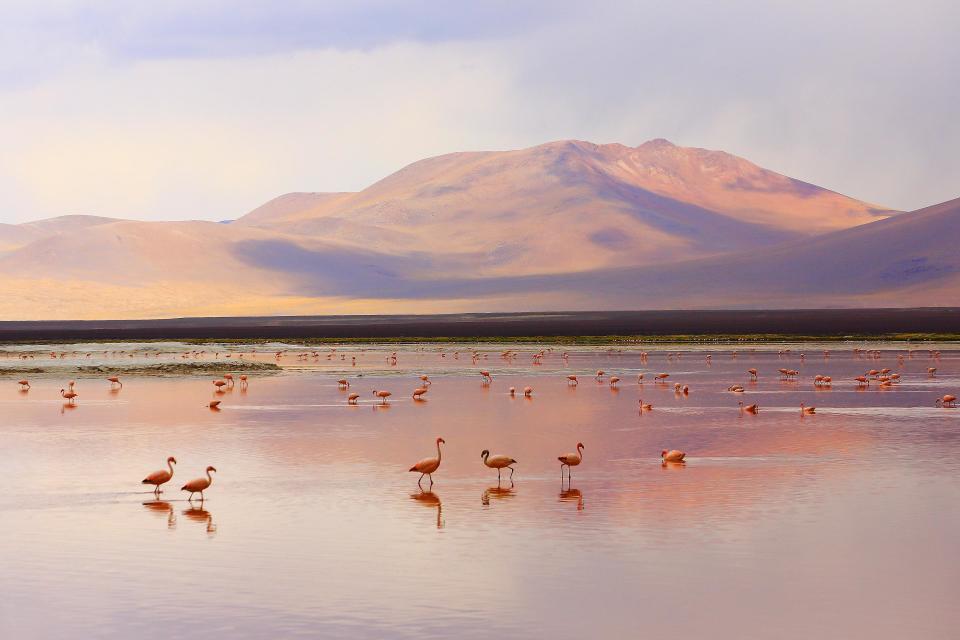
Galapagos, Ecuador: Islands of evolution
To Charles Darwin, the 13 species of Darwin’s finch were the most exciting birds of the Galapagos Islands: after all, his studies of these humble seed-eaters inspired his theory of evolution. More exciting for the non-scientist, perhaps, are the likes of the flightless cormorant and Galapagos penguin – not to mention the colonies of boobies, frigatebirds and waved albatross. Countless other creatures, from manta rays to marine iguanas, also put this celebrated archipelago on any wildlife bucket list.
Responsible Travel (01273 823700; responsibletravel.com) offers a 10-day tour of the Galapagos aboard a 20-passenger yacht, with opportunities to watch frigatebirds, penguins, blue-footed boobies, flamingos and the waved albatross colonies at Punta Suarez. From £2,984, excluding international flights.
Argentina: Downtown birding
Time to kill in Argentina’s vibrant capital and tired of tango? Grab your binoculars for a stroll around the Costanera Sur Ecological Reserve. Just a five-minute taxi ride from the centre of Buenos Aires, this green oasis beside the Rio de la Plata is a bird haven. More than 320 species have been recorded, from rufescent tiger-herons in the lagoons to woodpeckers, parakeets and caciques along the trails – not to mention Argentina’s national bird, the rufous hornero, with its clay “oven” nests.
Open daily 8am-7pm (6pm in winter; reservacostanera.com.ar). Experts lead a guided birdwatching circuit on the second Friday of every month, from 9am at the Calle Viamonte entrance.


